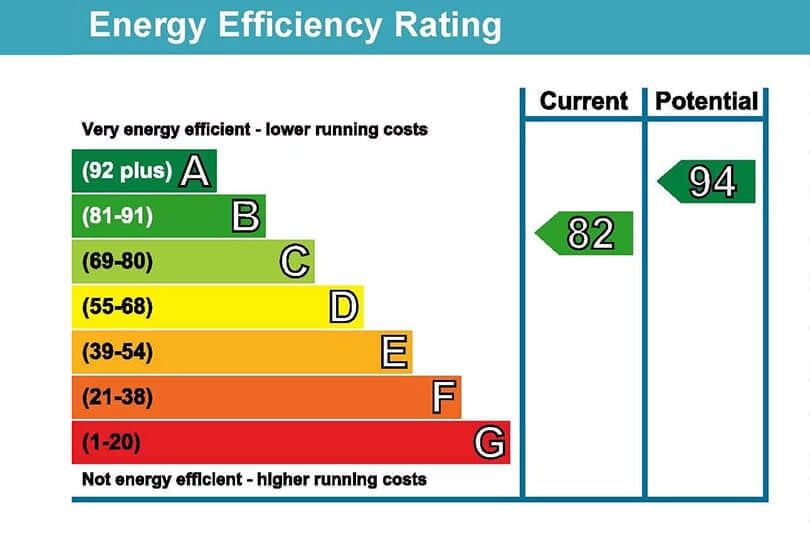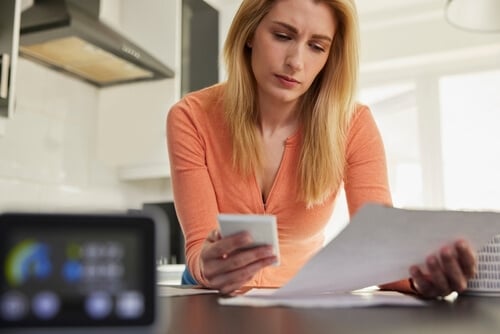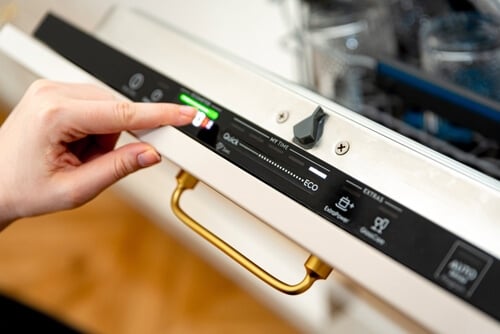The price of energy is coming down overall, though as we head into the winter and start to use more energy, it might not feel like it. You may be wondering how to save energy and manage your bills throughout the winter. To try and help you save as much as you can, we discovered devices that drain energy even when they’re not in use - otherwise known as energy vampire devices. Here’s how much they could be costing you, and 5 tips on how to slay energy vampire devices.

What can I do if I’m struggling to pay my energy bills?
Over half*(54%) of the people we asked are concerned about the rising cost of their energy bill. If you’re struggling to pay your energy bills, speak to your supplier. They might be able to reduce your direct debit or work out a payment plan, or they might be able to provide energy support. The government may also have energy grants available that could help towards the cost of energy.
You shouldn’t stop paying your energy bill, as this could affect your credit rating and could lower your credit score. Your supplier could also take you to court or even send bailiffs to your home to recover the costs.
What are vampire devices?
Vampire devices are electrical appliances that drain power when left on standby or when they aren’t in use.
For example, when you turn off your TV there’s no picture but the red standby light is still on. This stays on so you can connect with your TV every time you use the remote.
Although it’s a convenient function, the TV is still using power when it’s in standby mode. This is a vampire device in action and could increase your energy bill.
How much are my vampire devices costing me?
We looked at commonly used household devices and appliances and investigated how much these could cost when they’re in use and in standby mode combined:
| Device | Kw¹ | Duration² | KwH³ | Total price⁴ |
|---|---|---|---|---|
|
Kettle
|
3
|
4.7
|
14.1
|
£4.79
|
|
Electric heater
|
2.5
|
5.5
|
13.75
|
£4.68
|
|
Tumble dryer
|
2.5
|
5
|
12.5
|
£4.25
|
|
Washing machine
|
2.1
|
5.6
|
11.76
|
£4.00
|
|
Electric oven
|
2.1
|
5.6
|
11.76
|
£4.00
|
|
Dishwasher
|
1.5
|
5.9
|
8.85
|
£3.01
|
|
Hair dryer
|
2
|
4.3
|
8.6
|
£2.92
|
|
Iron
|
1.5
|
3.8
|
5.7
|
£1.94
|
|
Microwave
|
1
|
5.3
|
5.3
|
£1.80
|
|
Coffee Machine
|
0.8
|
5.1
|
4.1
|
£1.39
|
|
Toaster
|
1
|
4.1
|
4.1
|
£1.39
|
|
Television
|
0.35
|
8.5
|
2.9
|
£1.01
|
|
Lamp
|
0.5
|
5.1
|
2.6
|
£0.87
|
|
Fridge
|
0.15
|
15.3
|
2.3
|
£0.78
|
|
PC monitor
|
0.14
|
8.3
|
1.2
|
£0.40
|
|
Games console
|
0.12
|
5.9
|
0.7
|
£0.24
|
|
Speaker
|
0.1
|
6
|
0.6
|
£0.20
|
|
Hair styling equipment
|
0.1
|
4.9
|
0.49
|
£0.17
|
|
Laptop
|
0.05
|
6.4
|
0.32
|
£0.11
|
|
Air purifier
|
0.0502
|
5.9
|
0.3
|
£0.10
|
|
Printer/shredder/fax machine
|
0.05
|
5
|
0.25
|
£0.09
|
|
Tablet/iPad
|
0.012
|
5.1
|
0.06
|
£0.02
|
|
Amazon Echo
|
0.00181
|
8.3
|
0.02
|
£0.01
|
|
Mobile phone
|
0.005
|
5.8
|
0.03
|
£0.01
|
|
Radio
|
0.005
|
5.3
|
0.02
|
£0.01
|
Worst devices to leave on standby
Let's take a closer look at the worst devices to leave on standby and how much energy they use. This varies depending on the model and how often you use each appliance. But this estimation could give you a rough idea.
1. Kettle
Kettles are the Dracula of the energy vampire world. According to our research, in most households the kettle is plugged in and in use for around 4.7 hours per day.
The accumulative cost of several cups of tea is £4.79 per day. This could add up to roughly £140 per month on boiling the kettle.
No one likes the thought of cutting down on delicious tea and coffee, particularly in winter. But having fewer hot drinks could slay this inadvertent energy vampire. Alternatively you could try filling the kettle with only as much water as you need.
2. Electric heaters
Electric heaters have always been known for their high energy usage, but how much are they really costing you?
On average, an electric heater costs around £4.68 per day both plugged in and in use. This adds up to £140 per month if you’re using it every day.
For some though, heating a room with a small heater might be more cost effective than putting the heating on for the entire house.
3. Tumble dryer
You can’t beat that feeling of a freshly tumble dried blanket or jumper. But tumble dryers are a Dracula level energy vampire.
Costing around £4.00 per day to use, those cosy blankets might not be feeling so cosy. If you use your tumble dryer 3 times a week, you’re looking at a monthly cost of around £48.
4. Washing machine
Washing machines are essential appliances. But the average washing machine uses £4.00 worth of electricity per day.
Washing machines could be difficult to unplug. But to save energy you could try only washing full loads and dropping the temperature to 30 degrees.
If you’re in the market for a new washing machine, you could look at its energy efficiency rating. This could help to reduce your appliance’s running costs.
5. Electric oven
We found that an electric oven could cost around £4.00 a day if it’s plugged in or being used.
Batch cooking could reduce the amount you use your electric oven, or turning it off at the plug.
But if there’s no other way to reduce your oven use, you could make the most of the excess heat by leaving the oven door open when it’s off and cooling down. This could help to warm up your kitchen and any other room close by.
6. Dishwasher
Dishwashers cost around £3.00 per day to use, according to our research. You could cut down on this cost by running one fewer load per week.
According to Which? research, dishwashers use less water than hand washing, but it's still up for debate whether it's more energy-efficient
7. Hair dryer
Even a small vampire device like a hair dryer can drain energy. We found that hair dryers, if left plugged in or in use can use nearly £3.00 of energy per day.
If you use a hair dryer regularly, try unplugging it when you don’t need it. Or you could let your hair air dry.
Which devices drain the least energy?
These devices don’t use a huge amount of energy:
- Radio
- Smart speakers
- Mobile phones
- Hair styling equipment
- Fridge
- Air purifier
How can I slay energy vampire devices?
30% of people are confused about vampire appliances, and how they can stop them using energy when they’re not in use. Luckily, we’ve got some tips to help you slay energy vampire devices:
1. Avoid standby mode where you can
Turn switches off at the mains for your appliances and gadgets, for example your TV, computer monitors and games consoles. It might sound obvious, but you shouldn’t do this with your fridge!
2. Don’t leave chargers plugged to your devices when you’re not using them
Once they’re charged, disconnect the device and unplug the charger.
3. Turn your lights off when you leave the room
This is a simple energy saving tip. You could also try changing your lightbulbs to more energy-efficient ones if you can. LED lights are usually the most efficient. According to the Energy Saving Trust, switching to LEDs could save you £15 per bulb, per year.
4. Use your appliances to their full extent
Make sure you fill your washing machines and dishwashers rather than doing multiple loads. Try to lower their temperature setting too. Most appliances like this now come with an eco setting, so it could be worth trying this out and seeing how much you could save.
5. Use extension leads
Extension leads can be good! Plugging your devices into an extension lead and switching off just 1 plug saves you the effort of finding all of your energy vampire devices. Don't plug multiple power strips into one another, though, and opt for ones with built-in surge protection.
You could also look into timer plugs that could turn off your appliances automatically when you’re not using them.
What about the devices I need to keep on?
There are certain appliances in your house that will be switched on for long periods of time.
Under the One Watt Initiative, newer appliances have a maximum standby mode of 1W, which should save you money in the long run.
You can work out how energy-efficient an appliance is by looking at a product’s specification. This tells you its full power output.
Look for the energy-efficient traffic light label on appliances:

Sometimes these appliances cost a little more. But it could be worth considering when you look at how much it saves on your energy bill.
There are small things you can do with these appliances that should help you save more on your energy bill - for example, running an appliance on eco mode.
How can I save on energy?
Over 2 in 4 (42%) people have already decreased how much energy they use each day due to the current cost of living crisis. And a fifth (20%) would like to know ways to cut energy consumption in their house. Our tips could help to reduce your energy consumption and make your home feel warmer:
-
Check for draughts around your windows and doors. Plugging these with draught excluders can make your home feel warmer.
-
Turn off your vampire energy devices.
-
Look at getting an energy-efficient appliance if you’re getting a replacement. Although this might cost more initially, you might save on energy over time.
-
Submitting regular meter readings to your supplier can help to keep your energy bill accurate.
-
Have a smart meter installed to monitor your energy usage.
Sometimes switching providers can help you save energy. It's worth running a quick energy comparison to see if there are any suitable deals you could switch to.
You can also sign up to our switch-ready programme. You’ll have access to the latest deals, which are tailored to you. It only takes a minute to sign up:
-
Log in to your Confused.com account and confirm your energy details
-
We'll send personalised deals straight to your inbox
-
When you're happy with your deal, we'll complete the switch for you
Get personalised electricity deals straight to your inbox
*All figures taken from omnibus research carried out by One Poll on behalf of Confused.com. This was an online poll of 2,000 UK homeowners or renters who are at least partially responsible for energy bills (nationally representative sample). The research was conducted between 20th and 23rd of April 2022.
1Kilowatts for devices found on the following sites:
- https://www.cse.org.uk/advice/advice-and-support/how-much-electricity-am-i-using
- https://www.amazon.co.uk/gp/help/customer/display.html?nodeId=GT97FYF689C9R43
- https://geekmusician.com/do-speakers-use-a-lot-of-electricity/
- https://ecocostsavings.com/air-purifier-power/
- https://inthewash.co.uk/dishwashers/how-much-does-it-cost-to-run-a-dishwasher-uk/
- https://news.energysage.com/how-many-watts-does-a-phone-charger-use/#:~:text=Generally%2C%20phone%20chargers%20use%20about,to%20a%20120%2Dvolt%20outlet%20.
- https://energyusecalculator.com/electricity_coffeemaker.htm
- https://www.techadvisor.com/article/728205/how-much-does-it-cost-to-charge-a-phone-tablet-or-laptop.html
- https://energyusecalculator.com/electricity_printer.htm
2We asked 2000 (nationally representative sample) homeowners/renters who are at least partially responsible for energy bills how long they used these appliances for.
3Kilowatt hours is determined by kilowatts multiplied by duration.
4Total price is determined by kilowatt hour multiplied by the prices for the Energy Price Guarantee from 1 October 2022 until 1 April 2023. The prices are 34p per Kilowatt for electricity and don’t include the standing charge.







